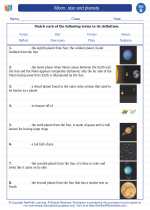Moon, star and planets -> gas giants
Gas Giants
Gas giants are a type of planet that are primarily composed of hydrogen and helium, with a small rocky core at their center. The four gas giants in our solar system are Jupiter, Saturn, Uranus, and Neptune.
Characteristics of Gas Giants
- Gas giants are massive, with diameters several times that of Earth.
- They have thick atmospheres made up of hydrogen, helium, and other gases.
- Gas giants have many moons and a system of rings, particularly prominent in the case of Saturn.
- They have strong magnetic fields.
- Gas giants do not have a solid surface, and their atmospheres gradually transition into a liquid or slushy state as depth increases.
Formation of Gas Giants
Gas giants are thought to have formed early in the history of the solar system, capturing hydrogen and helium gas from the surrounding nebula. Their large size and strong gravitational pull allowed them to accumulate vast amounts of gas and dust, leading to the formation of their thick atmospheres.
Exploration of Gas Giants
Several spacecraft have been sent to explore the gas giants in our solar system. For example, the Galileo spacecraft provided detailed information about Jupiter and its moons, while the Cassini mission studied Saturn and its rings. Future missions are planned to study Uranus and Neptune in more detail.
Study Guide
To study gas giants, it's important to understand their characteristics, formation, and exploration. Here are some key points to focus on:
- Describe the main characteristics of gas giants, including their size, composition, and moons.
- Explain how gas giants are thought to have formed in the early solar system.
- Discuss the exploration of gas giants by spacecraft and the important discoveries made during these missions.
[Gas Giants] Related Worksheets and Study Guides:
.◂Science Worksheets and Study Guides Second Grade. Moon, star and planets
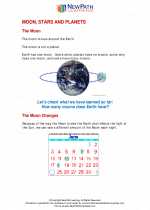
 Activity Lesson
Activity Lesson
 Worksheet/Answer key
Worksheet/Answer key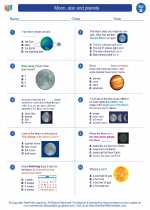
 Worksheet/Answer key
Worksheet/Answer key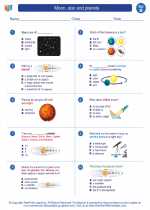
 Worksheet/Answer key
Worksheet/Answer key
 Vocabulary/Answer key
Vocabulary/Answer key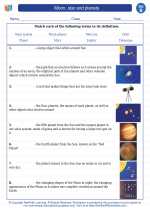
 Vocabulary/Answer key
Vocabulary/Answer key